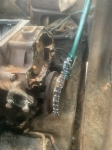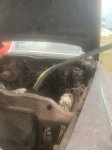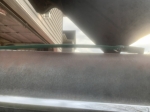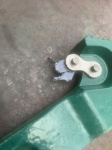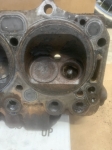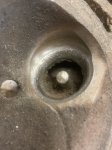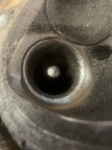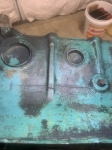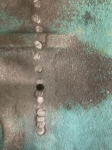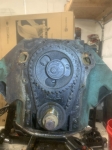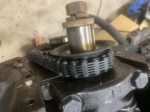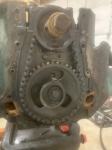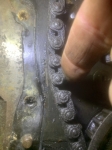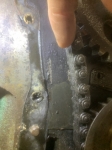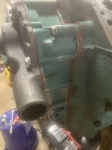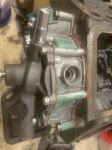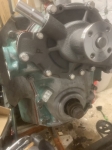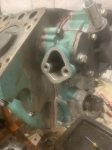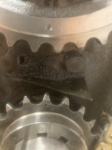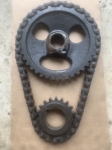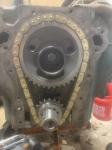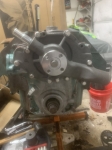Thought I’d start a thread to document my progress. If this isn’t allowed please let me know and I’ll delete.
Picked up a 58 Special two door sedan. Motor is locked up. Bought a 59 LeSabre for the free spinning motor thinking I could simply swap the engines out, but turns out the block from the 59 is seriously cracked. But it has a free spinning rotating assembly.
I’ve soaked the 58 in 50/50 ATF and acetone since July, and it is still stuck. Took the heads off and one of the valves was broken off. With the heads off I’ve soaked the cylinders for a week I Kroil. Been working on the crank pulley with a 24 inch chain wrench. Welp, today it bent the wrench, bent my piece of conduit I had laying around, and broke the chain but it still didn’t budge.
I think this engine must have a spun and seized bearing, or several stuck pistons. Was hoping to free it up to get it out of the car without the transmission, but it’s looking like I’ll have to take them both out together. With a HOA that’s already made me get rid of the 59, I’m skeptical I won’t get another letter. May have to sneak it into the back yard under the cover of darkness lol!!!
Picked up a 58 Special two door sedan. Motor is locked up. Bought a 59 LeSabre for the free spinning motor thinking I could simply swap the engines out, but turns out the block from the 59 is seriously cracked. But it has a free spinning rotating assembly.
I’ve soaked the 58 in 50/50 ATF and acetone since July, and it is still stuck. Took the heads off and one of the valves was broken off. With the heads off I’ve soaked the cylinders for a week I Kroil. Been working on the crank pulley with a 24 inch chain wrench. Welp, today it bent the wrench, bent my piece of conduit I had laying around, and broke the chain but it still didn’t budge.
I think this engine must have a spun and seized bearing, or several stuck pistons. Was hoping to free it up to get it out of the car without the transmission, but it’s looking like I’ll have to take them both out together. With a HOA that’s already made me get rid of the 59, I’m skeptical I won’t get another letter. May have to sneak it into the back yard under the cover of darkness lol!!!


